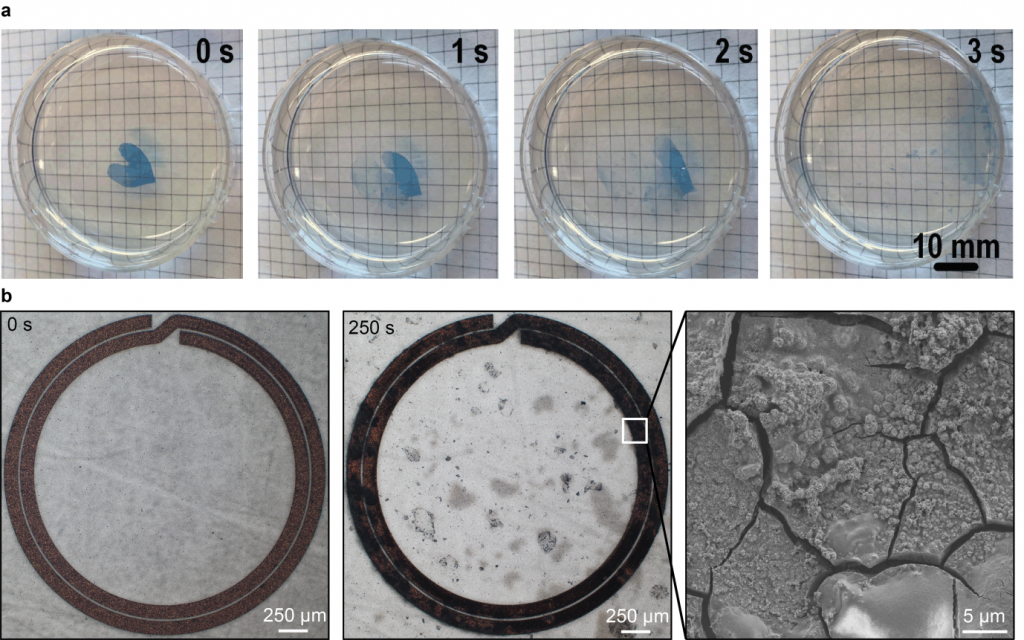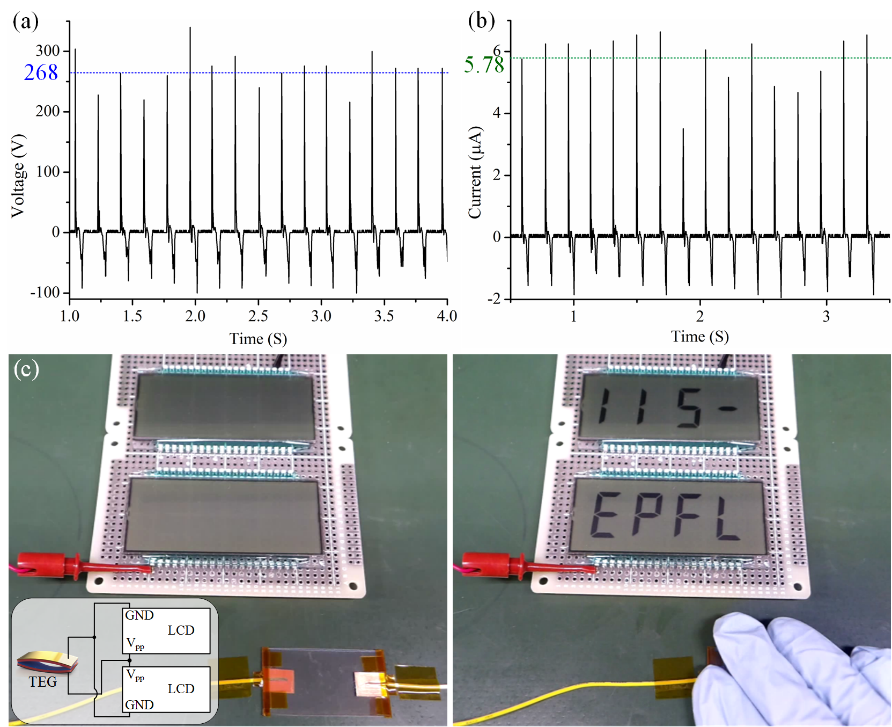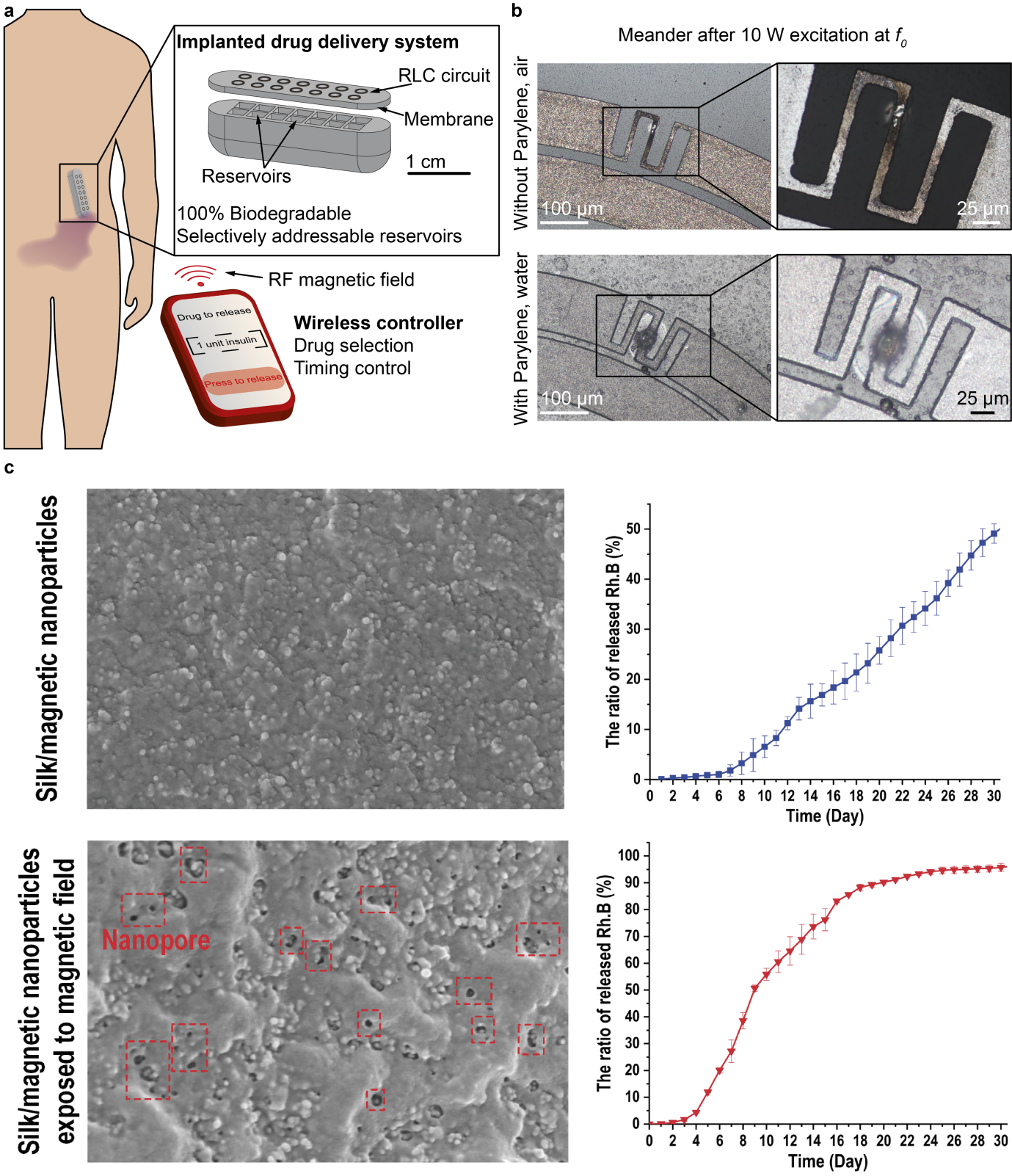Introduction
Soft micro-electro-mechanical systems (MEMS) are one area of high interest and under heavy research in micro/nano engineering and technology. Due to the configuration and properties of the materials used, soft MEMS possess several attractive properties, such as flexibility, stretchability and biocompatibility. Several polymeric materials, including poly(dimethylsiloxane) (PDMS), polyethylene terephthalate (PET), poly(methyl methacrylate) (PMMA), etc., have been employed to construct soft MEMS. Besides these, natural soft materials that are environment-friendly and even biodegradable are developing rapidly. It includes for instance poly(lactic-co-glycolic acid) (PLGA) and silk fibroin.
Objectives and Methods
Our research focuses on developing new micro/nano fabrication techniques to produce soft MEMS made of innovative, natural and soft materials. Beside this, we are extending the practical applications of these soft devices, particularly in the fields of energy harvesting and drug delivery systems. As for the recent progress, we investigated silk fibroin as a novel material for MEMS energy harvester. Silk fibroin is a negative material for triboelectric generator having a top-tier position in the triboelectric series and featuring an outstanding ability of losing electrons easily. Silk fibroin film is 90% transparent to light in the visible range and is thus a promising material for wearable MEMS .Silk fibroin is also a natural protein with beneficial properties for implantable drug delivery systems such as controllable biodegradation, biocompatibility, all aqueous purification and processing options, compatibility with sterilization methods, and excellent mechanical properties. Additionally, magnesium (Mg) is investigated as a biodegradable metal to fabricate transient electronics circuits and resonators. The rapid degradation of Mg in water implies to develop fabrication processes based only on dry processing steps.
 |
| Figure 1: Materials used to fabricate soft MEMS devices. a) Silk fibroin film (with blue dye) dissolved quite quickly in water within 3 seconds. b) Mg resonator shows rapid degradation once immersed in PBS due to the propagation of cracks. |
Applications
Wearable devices
Recently triboelectric generator (TEG) has been introduced as a promising energy conversion system to transform mechanical energy into electrical energy. To make an impact in practical applications, further improvements, in particular in the choice of the electrification materials, are needed. Here, we investigate silk fibroin as a novel TEG material. We demonstrate that by combining silk, that has a high ability to lose electrons, with PET, we obtain remarkable power densities up to 193.6 µW/cm2 with an external load impedance of 40 MΩ. Direct powering of a liquid crystal display (LED) and an electrostatic actuated cantilever are shown as concrete applications examples.
 |
| Figure 2: Electrical measurement of the silk-based triboelectric generator (TEG) by ~5 Hz body motion (i.e., finger pressing): (a) output voltage and (b) current on the matched load of 40 MΩ; (c) Two 4-bit liquid crystal displays were successfully directly driven by the silk-based triboelectric generator (TEG) without any external circuit. |
Implantable devices
Bioresorbable implantable medical devices show a great potential for applications requiring medical care over well-defined periods of time. Once their function is fulfilled, such implants naturally degrade and resorb in the body, which eliminates adverse long-term effects or the need for a secondary surgery to extract the implanted device. The CAPSULE drug delivery system consists of a 100% biodegradable implantable capsule with multiple reservoirs filled with drug. Each reservoir is covered with a membrane and a radio-frequency resonator on top of it. Each resonator has a different resonance frequency tuned by its geometrical parameters, which makes them selectively addressable. Using an external RF magnetic field, energy is coupled only into the frequency matched resonator where an electrical current is induced by electromagnetic induction, resulting in the Joule heating of that particular device only and the breaking of the underlying membrane. Each reservoir can thus be selectively opened. This way the amount of drug which is released can be precisely controlled over time. Another fully biodegradable transient drug delivery implant is made from silk fibroin films embed with iron oxide nanoparticles. When an external alternating magnetic field is applied, magnetic nanoparticles inside silk fibroin films locally heat up which induces thermal degradation of surrounding silk fibroin. Consequently, nanopore structures are generated which facilitate the release of Rhodamine B (Rh.B) dye solution.
 |
| Figure 3: a) Concept of a biodegradable implantable drug delivery system based on the use of frequency-selective microresonators as power receivers and microheaters to release the drug on demand. b) Broken meander hot spots of the resonators after applying an RF magnetic field. c) Nanopores could be generated by applying an external magnetic field to silk/magnetic nanoparticles composite film, which facilitate the release of Rh.B through the film. |
Keywords: triboelectric, biodegradable